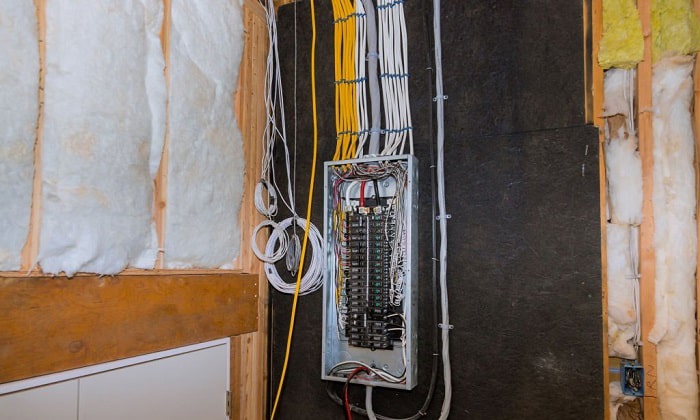Where does the neutral wire go in a breaker box? Finding out the answer is an easy job. You only need to take out the cover of your breaker box to see its connections. However, knowing where the neutral wire is isn’t enough. Learning its purpose and understanding a few relevant things about your electrical circuit is crucial.
This article will give you information on neutral and ground connections. Learning this is beneficial, especially for those planning to install a subpanel.
Where Does the Neutral Wire in Breaker Box Go
The neutral or white wire is usually connected to the breaker box’s neutral bus bar. At the same time, a ground wire, which is usually a plain copper wire or occasionally, one with green insulation, is also connected to the neutral bus bar.
Though a breaker box wiring neutral or ground is connected to the same bus bar, each serves a different purpose.
A neutral wire has the ability to return electricity to the panel breaker up to its power source, which is the transformer.
On the other side, the purpose of the ground wire is to provide an emergency path for electricity to flow into the earth. In other words, it is to protect anyone from electrocution at times of ground fault.
Installing a wire neutral and ground in the breaker box is good to have a proper flow of electricity. Having no ground wire connection in your circuit is very dangerous, especially in times of ground fault.
The National Electrical Code requires a separate ground wire and neutral wire connection for the sub panel.
Having neutral and ground on same bus bar in the subpanel may cause danger to your circuit. If the ground and neutral wires are connected to the same bus bar on the subpanel, there will be a current flow through the ground back to the panel.
In short, neutral and ground on same bar in the subpanel will clearly become a shock hazard.
This video by The Engineering Mindset will undoubtedly assist you in understanding how a ground, neutral, and hot wire connection works. He makes the video very simple to follow and covers all aspects of electrical wiring concisely.
How to Wire a SubPanel
A subpanel or satellite circuit breaker acts as a small service panel for a specific area of a home or building. It is mainly used or installed in a separate location to make it more accessible for the structure it serves.
- A 240 volts circuit also powers it with a required amp for the specific current rating needed in that installation area.
- Starting with the NEC of 2008, the proper way of installing a sub panel is to use a four-feed wire. It is designed to support two hot wires, one neutral wire, and one ground wire.
- The neutral and ground wires should be connected to separate bus bars according to the rules.
Conclusion
Answering the question,”Where does the neutral wire go in a breaker box?” is easy. However, you would need to understand how electrical wiring works in an electrical circuit to know the difference between the neutral and ground wire. This will be essential if you plan to install a subpanel for some of your circuits.
Do you want to know more about electrical wirings? And how about installing a subpanel? Is there anything you want to know more about? Write it in the comment box below so we can discuss it for our next article.

I am Andrew Wright. With 8 years of experience designing, installing, and maintaining electrical power systems. I love my job, and I have always wanted to offer others the necessary help so they can take care of their houses.



